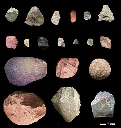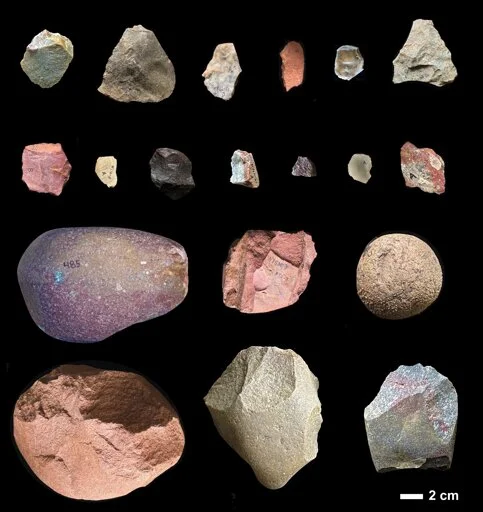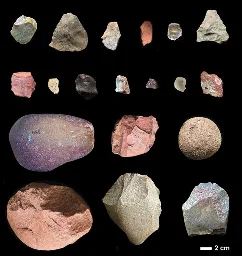Stone tools unearthed in Kenya reveal ancient human relatives regularly moved raw materials several miles
Stone tools unearthed in Kenya reveal ancient human relatives regularly moved raw materials several miles

Stone tools unearthed in Kenya reveal ancient human relatives regularly moved raw materials several miles

In southwestern Kenya more than 2.6 million years ago, ancient humans wielded an array of stone tools—known collectively as the Oldowan toolkit—to pound plant material and carve up large prey such as hippopotamuses.
These durable and versatile tools were crafted from special stone materials collected up to eight miles away, according to new research led by scientists at the Smithsonian's National Museum of Natural History, Cleveland Museum of Natural History and Queens College.
Their findings, published in the journal Science Advances, push back the earliest known evidence of ancient humans transporting resources over long distances by some 600,000 years.
"People often focus on the tools themselves, but the real innovation of the Oldowan may actually be the transport of resources from one place to another," said Rick Potts, the senior author of the study and the National Museum of Natural History's Peter Buck Chair of Human Origins.
"The knowledge and intent to bring stone material to rich food sources was apparently an integral part of toolmaking

While nowhere near as old, I just watched a fascinating video on the "Green Sahara" last night where they found evidence of goods moved up to 100 miles.
Good watch:
https://youtu.be/HVXE4eTa94A
More:
https://www.nigerheritage.org/archaeology
"Beautiful Woman
A well preserved skeleton of an adult female, approximately 6,000 years old, in a side burial position with the pollen of a holly plant found under her head and pelvis. The holly plant grows only at high altitude and must have come more than 160km (100 miles) distance from the Aïr highlands."
Also:
"In 2006 Paul Sereno and his team found ancient quarries of this rock type about 160km (100 miles) distant, on the eastern edge of the Aïr highlands. Some tools were made there and boulders of this source rock were transported to Gobero for tool-making on site."
I’ve bookmarked this to watch! Ran across some new geological research when I was browsing this am explaining some of the weather that enabled the greenery in that region
Video explains it well. Everyone knows the Earths axial tilt is 23.5°, more or less, but there's a 13,000 year "wobble" cycle that determines what part of Earth is pointed at the Sun during perihelion.
So when the Sahara is in that sweet spot, the sun bakes the land causing a low pressure area that draws cool, moist air in off the Atlantic, drenching what is now our desert with monsoon rains.
This rain/desert cycle repeats over and over again. We're just living in the desert cycle currently.